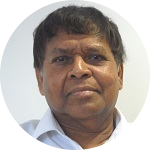The United Nations Development Programme (UNDP) released this year’s Human Development Report in Tokyo in July. As usual, it contains a wealth of information based on meticulous research on the state of affairs on our planet from a human development perspective.
It is certainly reassuring that “levels in human development continue to rise.” Yet, on the whole, the report makes for sombre reading and awakens us to some stark realities. In summation, all is not well for nearly a third of our fellow human beings.
The report calls for universal access to basic social services, especially health and education; stronger social protection including unemployment insurance and pensions; and a commitment to full employment.
It could not have come at a more opportune time: the world is crying out for greater equality.
An abysmal gulf persists and threatens to widen further. A few examples illustrate the point:
• Life expectancy at birth ranges from 83.6 years in Japan to 45.6 years in Sierra Leone
• Average length of time in school varies from 12.9 years in Germany and the USA to 1.3 years in Burkina Faso
• South Africa, Namibia and Comoros top the global income inequality table with a Gini coefficient of over 63 per cent – shockingly – with China at 42.1 per cent, the USA at 40.8 per cent and the UK at 36 per cent.
The report lays particular emphasis on life cycle vulnerability and points out that the difficulties experienced in early childhood can have serious consequences throughout life – including a decisive impact on employment prospects.
Moreover, they tend to add to the uncertainties associated with old age and risk being transmitted to the next generation. The need is stressed for investment in early childhood education, health and nutrition but also on employment opportunities for youth and support for older people.
The International Trade Union Confederation (ITUC) has been mobilising support for the inclusion of these in the post-2015 development agenda with some success.
Indeed, the final text of the Open Working Group (OWG) on Sustainable Development Goals (SDGs), recently released, includes the reduction of inequalities within and between countries as a stand-alone goal.
That’s a goal the UK’s Trades Union Congress (TUC) has long sought support for from Department for International Development (DFiD) ministers and civil servants in the UK.
The report notes that “rising income inequality in developed and developing countries has been associated with higher economic volatility and slower progress in human development”.
The ITUC advocates the introduction of nationally determined social protection floors (SPFs). There is evidence that even small increases in per capita income in the form of SPFs can significantly enhance human development in less developed countries.
Rises in per capita income in high-income countries contribute relatively less to improvements in human development. The comparison of the ranking of the 43 less developed countries by the values of their Human Development Index with that of their ranking by per capita income reveals a positive correlation.
A similar analysis of data for the 49 high-income countries, too, points to a positive relationship, albeit, to a lesser degree.
Human development is indeed at the heart of our concerns.
According to the report, 59.4 per cent of health expenses have to be borne by the people themselves in India – a country where 27.8 per cent of the population live in severe, multidimensional poverty.
The proportion of out of pocket expenses on health is even higher in Burma at 80.7 per cent.
While we fully acknowledge the need for economic growth and attendant rises in income, substantial improvements in public services – health, education, water and sanitation, etc. – must go hand-in-hand with full, productive and decent employment opportunities for all.









